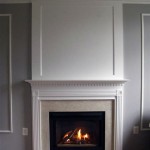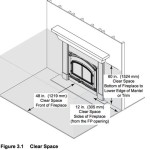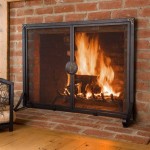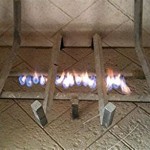Fireplaces And Stoves Direct: A Comprehensive Guide
Fireplaces and stoves have long been cherished features in homes, providing warmth, ambiance, and a focal point for gathering. The evolution of these heating appliances has resulted in a diverse range of options, each offering unique benefits and catering to specific needs. Fireplaces And Stoves Direct, as a concept, encompasses the sourcing, selection, installation, and maintenance of these heating solutions, often directly from manufacturers or authorized distributors. This approach aims to streamline the process for consumers, ensuring quality, competitive pricing, and expert guidance.
Selecting the appropriate fireplace or stove requires careful consideration of several factors. These include the size and layout of the space to be heated, the desired aesthetic, fuel type preferences, and budgetary constraints. Understanding the available options and their distinct characteristics is crucial for making an informed decision that meets both practical and aesthetic requirements.
The market offers a wide array of fireplaces and stoves, each with its own advantages and disadvantages. Traditional wood-burning fireplaces, gas fireplaces, electric fireplaces, and various types of stoves, such as wood stoves, pellet stoves, and gas stoves, are among the most common choices. Determining the most suitable option involves a thorough evaluation of individual needs and preferences.
Understanding Different Types of Fireplaces
Fireplaces are generally categorized based on their fuel source and installation type. The most prevalent types include wood-burning fireplaces, gas fireplaces, and electric fireplaces.
Wood-burning fireplaces offer a classic appeal and provide a natural, radiant heat. They require a chimney for ventilation and are typically associated with a traditional aesthetic. However, wood-burning fireplaces necessitate a consistent supply of firewood, require regular cleaning to remove ash and creosote, and are subject to local regulations regarding emissions. The efficiency of wood-burning fireplaces can vary significantly depending on the design and construction, with older models often being less efficient than newer, EPA-certified models.
Gas fireplaces offer convenience and ease of use. They can be fueled by natural gas or propane and can be operated with a simple switch or remote control. Gas fireplaces produce consistent heat and require minimal maintenance compared to wood-burning fireplaces. They are also typically more efficient, converting a higher percentage of fuel into usable heat. Gas fireplaces require proper ventilation and professional installation to ensure safety and compliance with local codes.
Electric fireplaces are the most convenient and versatile option. They require no venting and can be installed virtually anywhere with an electrical outlet. Electric fireplaces use heating elements to generate heat and often feature realistic flame effects, enhancing the ambiance of the room. They are relatively inexpensive to operate and require minimal maintenance. Electric fireplaces are an excellent choice for supplemental heating and can be easily moved from room to room.
Exploring the Variety of Stoves
Stoves, like fireplaces, are heating appliances that offer a distinct aesthetic and functional appeal. Common types of stoves include wood stoves, pellet stoves, and gas stoves.
Wood stoves are freestanding appliances that burn wood to generate heat. They are typically more efficient than traditional wood-burning fireplaces, offering greater control over the burn rate and heat output. Wood stoves require a chimney or flue for ventilation and necessitate a readily available supply of firewood. Modern wood stoves are often EPA-certified, meeting strict emissions standards and promoting cleaner burning. The selection of a wood stove involves considering the size of the space to be heated and the desired heat output, typically measured in BTUs (British Thermal Units).
Pellet stoves burn compressed wood pellets, which are made from recycled wood waste. They offer a consistent and controlled heat output, with automatic feeding systems that regulate the burn rate. Pellet stoves are relatively efficient and produce fewer emissions than traditional wood stoves. They require a hopper to store the pellets and an auger to feed them into the burn chamber. Pellet stoves require regular cleaning and maintenance to ensure optimal performance. The availability and cost of wood pellets should be considered when evaluating pellet stoves as a heating option.
Gas stoves, similar to gas fireplaces, are fueled by natural gas or propane. They offer convenience and ease of use, with instant on/off functionality and adjustable heat settings. Gas stoves require proper ventilation and professional installation to ensure safety and compliance with local codes. They are relatively efficient and require minimal maintenance. Gas stoves provide a consistent and reliable heat source and can be operated with a thermostat or remote control.
Key Considerations When Purchasing Direct
Purchasing fireplaces and stoves directly from manufacturers or authorized distributors can offer several advantages, including competitive pricing, a wider selection, and expert guidance. However, it also requires careful consideration of certain factors.
One key consideration is ensuring the credibility and reputation of the supplier. Researching the manufacturer or distributor's history, customer reviews, and industry certifications is crucial to avoid potential issues with product quality, warranty coverage, and customer service. Verifying that the supplier is authorized to sell the specific brands and models of interest is also essential.
Another important factor is understanding the warranty terms and conditions. A comprehensive warranty provides assurance against defects in materials and workmanship, protecting the investment in the fireplace or stove. Reviewing the warranty documentation carefully, paying attention to the duration of coverage and any exclusions, is highly recommended. Determining the process for filing a warranty claim and obtaining support is also important.
Installation requirements should be thoroughly assessed before purchasing a fireplace or stove directly. Many fireplaces and stoves require professional installation to ensure safety and compliance with local codes. Confirming that the chosen supplier offers installation services or can recommend qualified installers is essential. Obtaining multiple quotes from different installers can help ensure a fair price and quality workmanship.
Furthermore, it is crucial to understand the return policy and any associated restocking fees. In the event that the fireplace or stove does not meet expectations or is damaged during shipping, having a clear return policy in place can facilitate a smooth resolution. Inquiring about the procedures for returning merchandise and obtaining a refund or replacement is advisable before making a purchase.
Finally, consider the long-term costs associated with owning and operating a fireplace or stove. These costs can include fuel expenses, maintenance fees, and repair costs. Comparing the energy efficiency ratings of different models can help estimate fuel consumption and operating costs. Budgeting for regular maintenance, such as chimney cleaning or component replacements, is also prudent.
The selection of a fireplace or stove represents a significant investment in home comfort and ambiance. By carefully considering the available options, understanding the associated costs, and purchasing directly from reputable suppliers, homeowners can make informed decisions that enhance their living spaces and provide years of enjoyment. A direct approach to purchasing fireplaces and stoves can provide cost savings, access to a wider product selection, and personalized service, leading to a more satisfying outcome.
Beyond the functional aspects, the aesthetic contribution of a fireplace or stove should not be overlooked. These appliances serve as focal points in a room, influencing the overall decor and atmosphere. Selecting a design that complements the existing architectural style and personal preferences is important for creating a cohesive and visually appealing space. From traditional brick fireplaces to contemporary stainless steel stoves, the options are vast and varied.
The environmental impact of fireplaces and stoves is an increasingly important consideration. Wood-burning appliances can contribute to air pollution if not operated properly or if older, inefficient models are used. Choosing EPA-certified wood stoves or opting for gas or electric alternatives can help minimize environmental impact. Properly maintaining wood-burning appliances and using seasoned firewood can also reduce emissions.
Safety is paramount when it comes to fireplaces and stoves. Adhering to manufacturer's instructions and local codes is essential for preventing fires and carbon monoxide poisoning. Installing smoke detectors and carbon monoxide detectors is a critical safety measure. Regular inspections and maintenance by qualified professionals can help identify and address potential hazards.
In summary, the decision to purchase fireplaces and stoves directly involves a multifaceted assessment of needs, preferences, and practical considerations. By thoroughly researching the available options, understanding the associated costs, and prioritizing safety and environmental responsibility, homeowners can make informed choices that enhance their homes and provide lasting comfort and enjoyment.

The Best Log Burner Fireplaces Direct Stoves

Can You Install A Wood Stove In Fireplace Direct Stoves

Direct Vent Stoves Inserts Fireplaces Northern Va Winson S

Fireplaces Direct On Big Personality Perth

Axon Montana Limestone Fireplace With Reeded Chamber From Direct Stoves

Discover The Oxford Direct Vent Gas Stove Beauty Convenience Combined

Direct Vent Gas Stoves In Dc

Gas Stoves

Find Out The Advantages Of A Direct Vent Gas Stove Embers Fireplaces Outdoor Living

Axon Sworth Limestone Fireplace With Chamber From Direct Stoves








